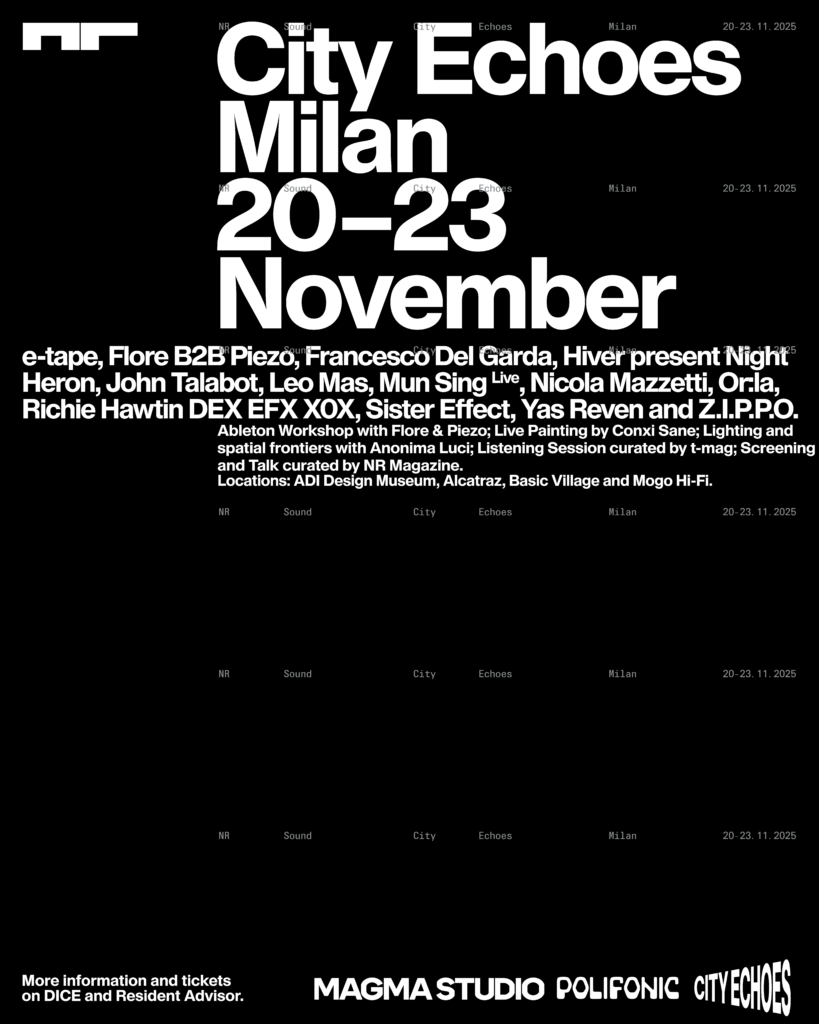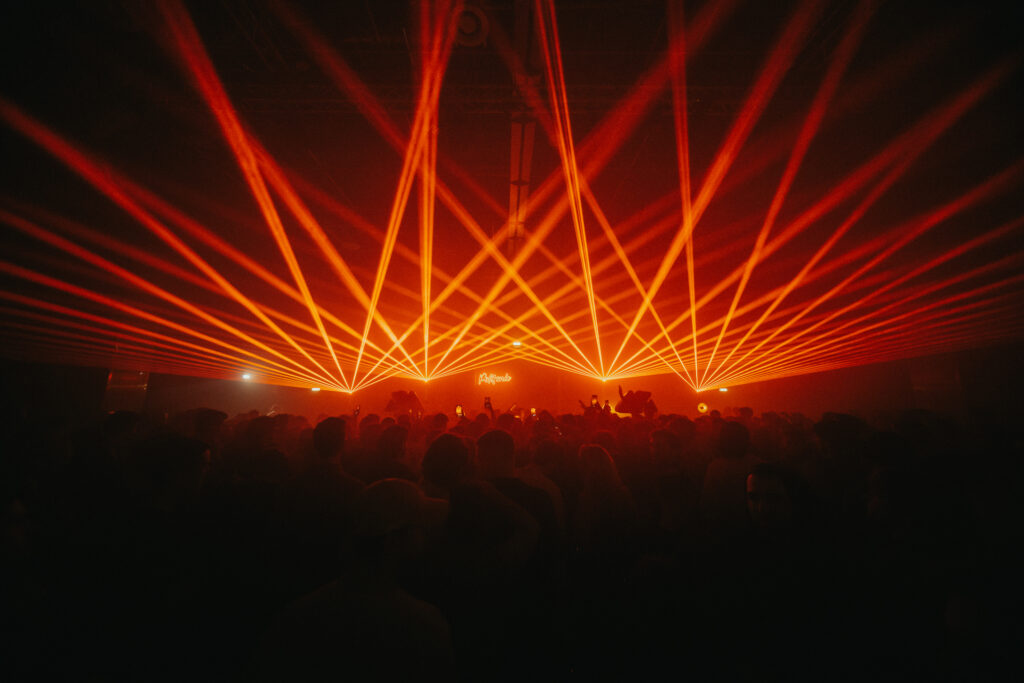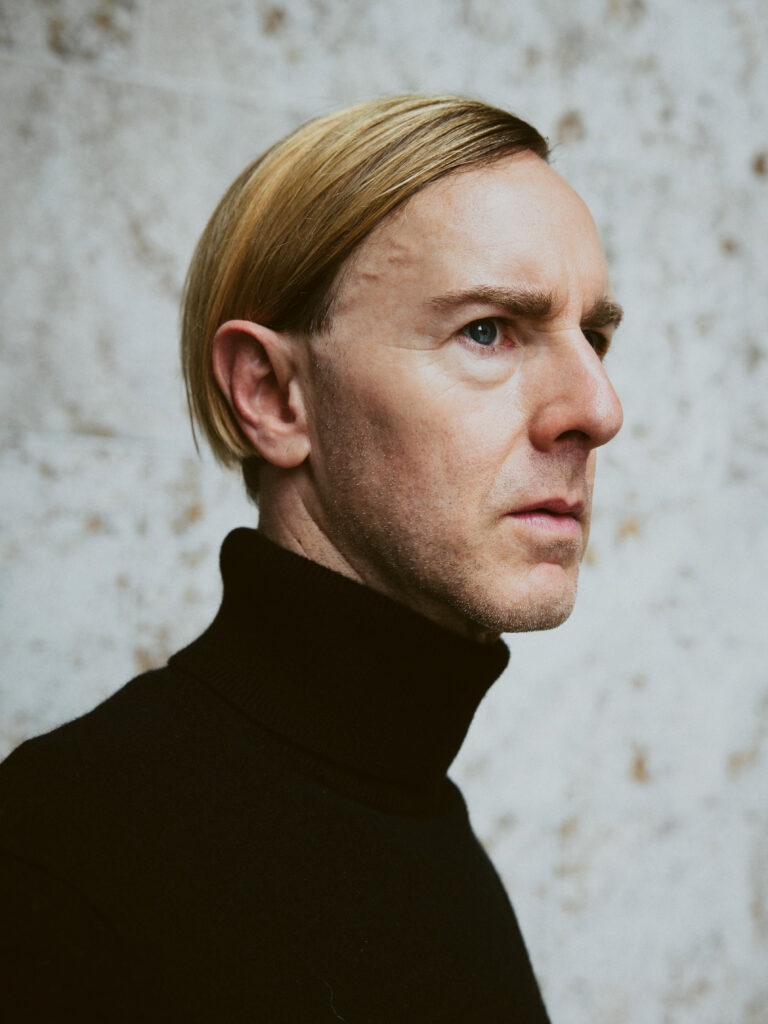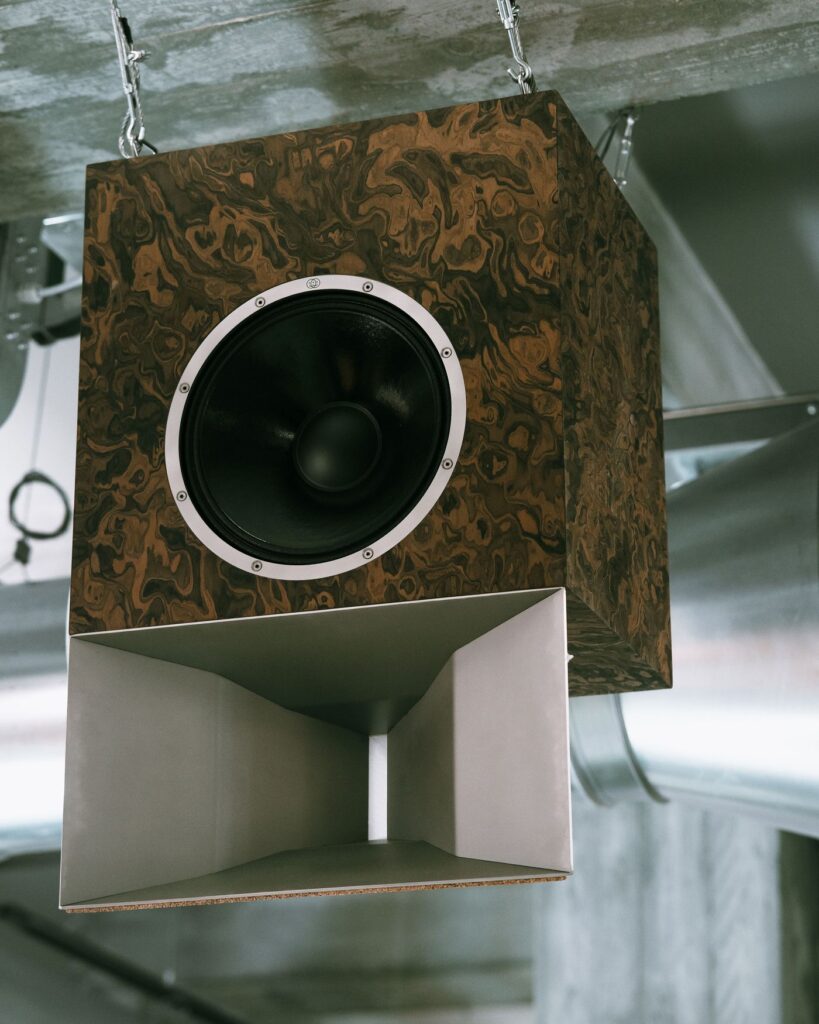
An echo begins where presence ends. It travels through distance and matter, with new forms, new meanings. What begins as vibration becomes reflection, architecture, trace: an unfolding memory. Echoes persist beyond rhythm. Even long after the last note, they inhabit the mind, soul and body — a silent gesture, an oral memory of inspiration whispered across generations. What remains when an afterimage emerges. In this lingering vibration, the city itself begins to hum. What we call urban life is nothing more than the overlapping reverberations of being, of the very human existence, of expression.

City Echoes is a reverberation made visible. The city becomes an instrument, the listener an echo and sound, the moment. A memory of what the present leaves behind.
Each genre, from experimental to house, techno to bass, unfolds as a distinct resonance. What remains is no longer the notes alone, but their afterlife: a vibration that maps the invisible cartography of Milan’s collective pulse.
From November 20 to 23, 2025, the city becomes a field of resonance: five venues, from Triennale Cuore and VOCE to Alcatraz, Basic Village and Mogo Hi-Fi. Across these, sound is embodied, expanding into light, gesture and collective emotion. Each vibration becomes a trace, a sonic imprint.
Born in Valle d’Itria and rooted in the cultural depth of Italy, Polifonic has long treated music as a language of encounter between disciplines, geographies and generations. With City Echoes, this ethos finds a new dimension: a celebration of sound as a living architecture and of Milan as its resonant host.
On Thursday, November 20, the festival opens at Triennale Cuore and Triennale VOCE with a dialogue between density and release, emotion and distortion. Mun Sing brings a visceral live set where bass music and abstract electronics collide. Yas Reven follows with cinematic, introspective layers, while Z.I.P.P.O. closes with his signature blend of atmosphere and precision, transforming the dancefloor into an immersive, communal space. Earlier that evening, Frontiers of Light and Space, a conversation with Anonima Luci, explores how light design can act as a language of architecture, a sensorial extension of the spaces we inhabit.
On Friday, November 21, Triennale Cuore and VOCE move toward a subtler kind of resonance, one made of patience, intuition and rhythm. Francesco Del Garda crafts a hypnotic flow of minimalism and groove, while Nicola Mazzetti traverses deep house and experimental textures, shaping a sonic journey suspended between elegance and instinct. A listening session curated by t-mag opens the evening, reflecting on the politics of listening and the act of being present, tuning into the spaces between sounds.
On Saturday, November 22, Triennale Cuore and Alcatraz embody expansion. The much-anticipated back-to-back between Flore and Piezo merges bass, club experimentation and rhythmic play, a meeting of two sonic minds in constant motion. John Talabot follows with a set of emotional depth and luminous texture, leading into Richie Hawtin’s DEX EFX X0X, an exclusive performance for Italy that blurs the boundaries between human gesture and technological intuition.

Sister Effect closes with a magnetic presence that binds the night together. Earlier that day, City Echoes hosts an Ableton Workshop with Flore and Piezo, a deep dive into process, texture and intuition, guided by two long-time Ableton Certified Trainers.
On Sunday, November 23, Basic Village and Mogo Hi-Fi turn toward introspection and ritual. Leo Mas channels the primal energy of rhythm into enveloping grooves at Mogo Hi-Fi, followed by Or:la, whose set weaves techno, breakbeat and bass into a dark and luminous continuum. The Milan-based duo Hiver present Night Heron, a project between ambient, downtempoand electronic pulse. Amidst the sound, e/tape leads a Sound Bath Experience, an immersive session where vibration becomes a form of collective healing Simultaneously, Conxi Sane paints live throughout the day, transforming gesture, rhythm and pigment into a living artwork that evolves with the music, a visual echo of sound in motion.

Here, music is not consumed. It is absorbed. Every sound leaves an echo. Some fade quickly; others, born of true resonance, transform all.
Find full details on the Polifonic website and secure a spot via Dice.
Credits
- Polifonic. Photography Vittorio La Fatta
- Richie Hawtin. Photography Sima Dehgani






